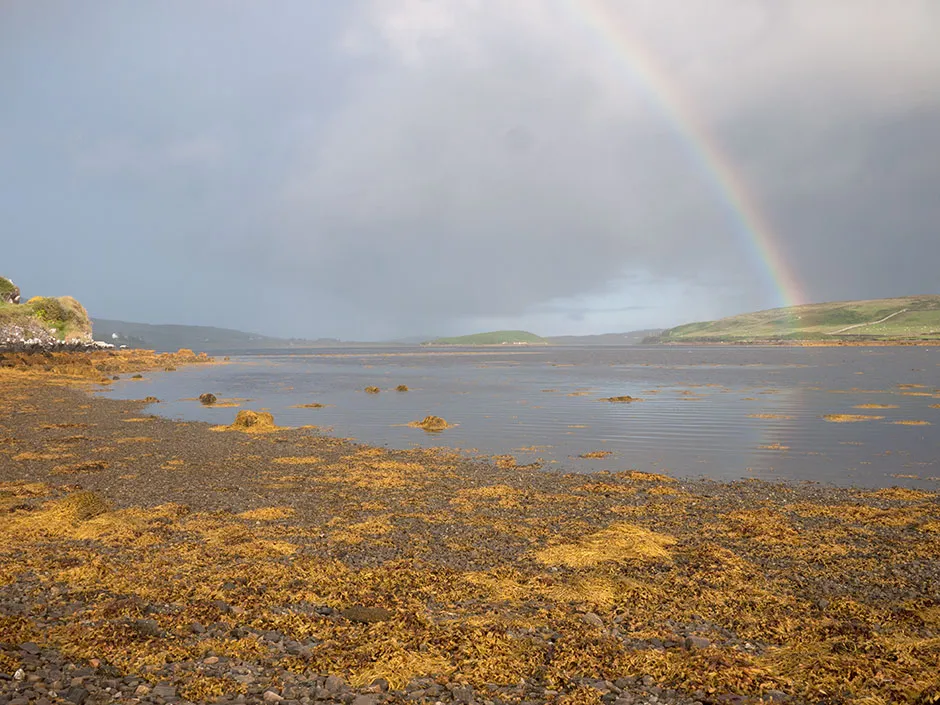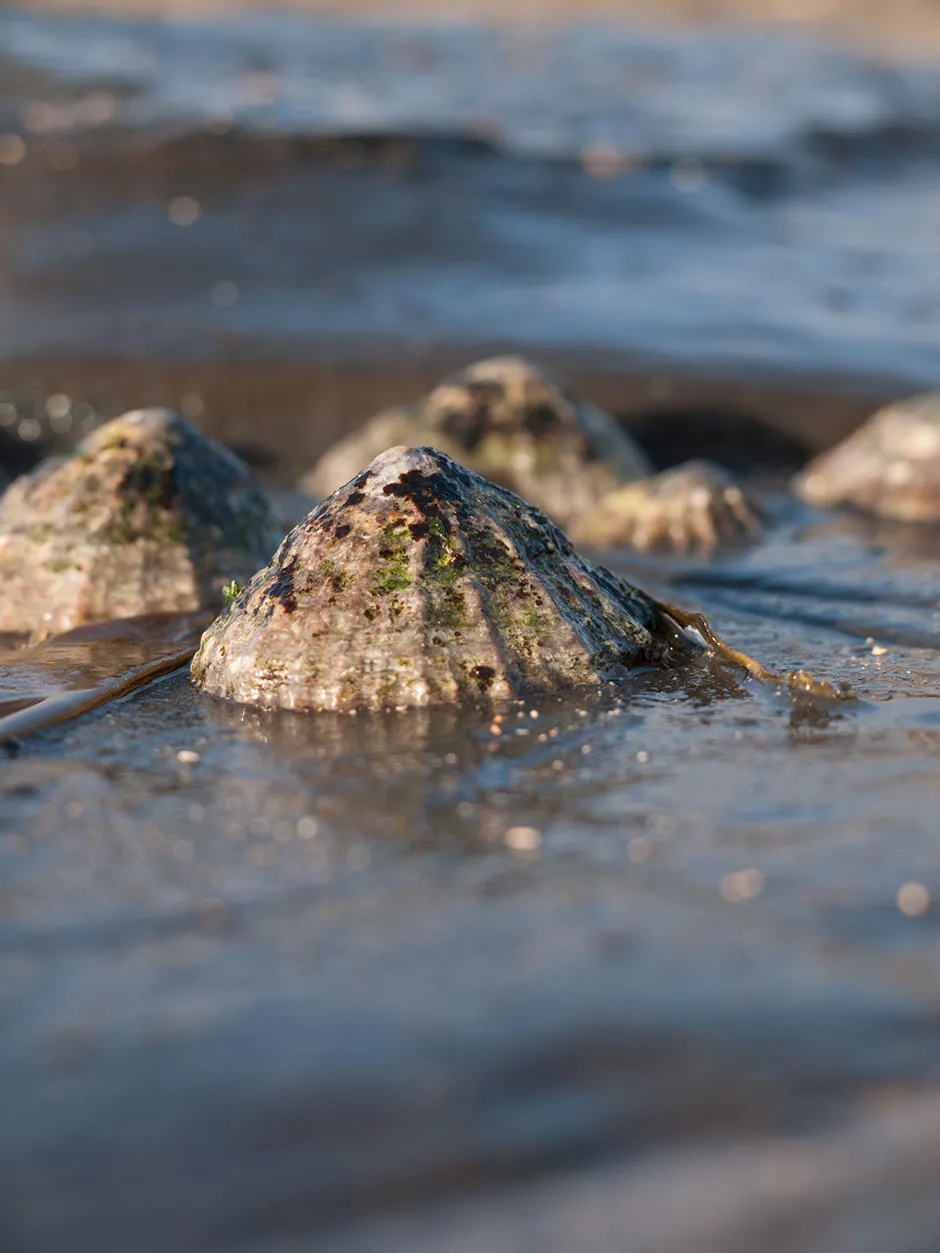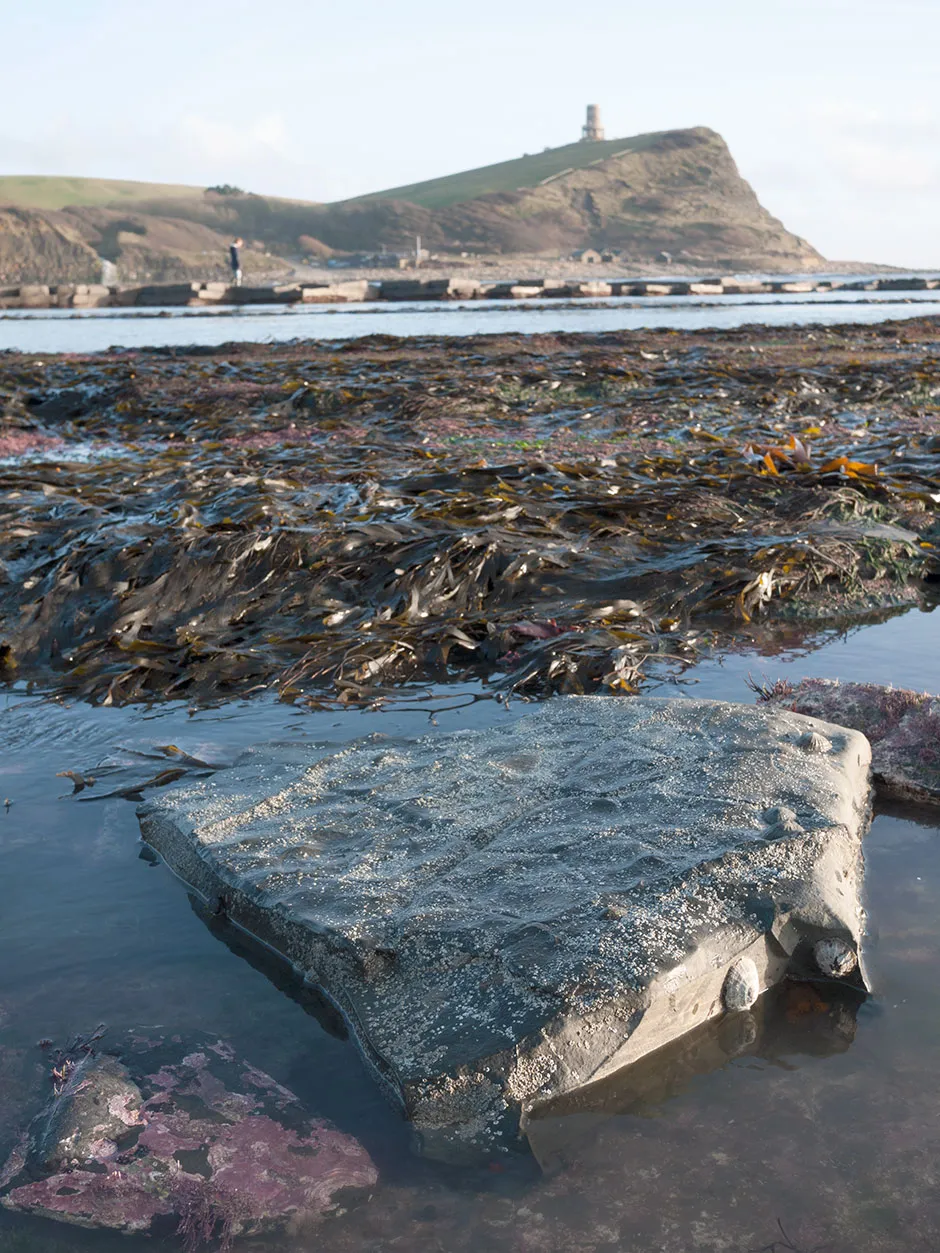Life on the rocky shore is influenced predominantly by the reach of the waves and a series of zones is usually visible on the rocks. The width and character of each zone is variable and is influenced by tidal range, degree of exposure to wave action, slope and aspect.
Conditions higher up the shore are more demanding for marine species, and species diversity (and competition between species) generally increases along a gradient down the shore.
Plants such as Rock Sea-lavender and Thrift occur on the upper edge of the ‘splash zone’, the zone above the high tide mark that is not submerged, but is splashed by breaking waves and is dominated by black and orange crustose lichens.

Below the splash zone, the ‘upper shore zone’ is submerged by high tides, but for relatively short periods and not on every tide. Here, green seaweeds can dominate, especially where freshwater runs across the shore. The ‘middle shore zone’ is submerged for longer and tends to be dominated by tough brown seaweeds (such as Bladder Wrack and Spiral Wrack) that can out-compete seaweeds characteristic of the upper zone.
The ‘lower shore zone’ is submerged most of the time and red seaweeds are common, with large kelps on the extreme lower shore. Exposed shores tend to be less diverse than sheltered shores, as high-energy waves damage seaweeds, but they are still inhabited by sedentary animals that can attach firmly to rocks, including limpets, barnacles and mussels.
Read more about conservation:
Similar habitats
Rocky Shore is often found below Hard Cliff and Cliff Slope, and there is overlap between the splash zone of Rocky Shore and cliff bottoms.
Conservation on rocky shores
In general, conservation management revolves around protection from damaging activities and overharvesting (commercial harvesting of shellfish and seaweed occurs in some locations). Threats include pollution, both marine (e.g. oil spills) and from the land (e.g. sewage effluent).
There is also some evidence that trampling and harvesting can reduce species diversity. Rocky shores are wonderful places in which to observe a great diversity of species at close quarters and are often visited by school and university field trips. They play an important role in inspiring an interest in ecology and public awareness of the marine environment.

What to look for on rocky shore
Rocky Shore life-forms are very diverse. Look out for Sea Slater (a littoral woodlouse) in the splash zone, sandhoppers (tiny shrimp-like crustaceans) under piles of seaweed on the upper shore, Common Hermit Crab inhabiting old Dog Whelk or Common Periwinkle shells, and pipefish camouflaged among weeds.
On the lower shore, look out for Sea Lemon (a sea slug), Star Sea Squirt (which grow in jelly-like colonies) and Bread-crumb Sponge and, from the upper shore down, a variety of seaweeds.

Distribution and extent
Widely distributed around the coasts of Britain and Ireland. Map indicates general areas with rocky shores and shading also includes the broad distribution of the Annex I habitat for submerged or partly submerged sea caves (H8330).
How to recognise
Rocky Shore is a jumble of boulder sand ledges of various shapes and sizes, most of which are periodically submerged by sea water. When the tide falls, hollows and channels retain sea water and hold a microcosm of the marine environment, with a great diversity of life-forms including seaweeds, sea sponges, sea anemones, sea urchins, crustaceans, shellfish and small fish.
Rock slippery with thick seaweed and speckled with barnacles and limpets is exposed briefly before the tide starts to rise again. Rocky Shore is a common coastal habitat, found on a range of coasts from exposed Atlantic headlands to the sheltered shores of sea lochs, and is the main coastal habitat of the north and west.

When to visit
Year-round. Check a tide table and try to visit at low tide when the greatest area of shore is exposed – spring tides are best.

Did you know?
Over 500 species of seaweed have been identified in Irish waters.
Seaweeds have long been harvested for food and also as a fertiliser. Seaweed was particularly important in areas with poor soil, allowing human settlement and cultivation in areas that would otherwise have been uninhabitable.
Extracted from Britain's Habitats by Sophie Lake, Durwyn Liley, Robert Still and Andy Swash. Available now (£25, Princeton University Press).
- Buy now from Amazon or Waterstones
